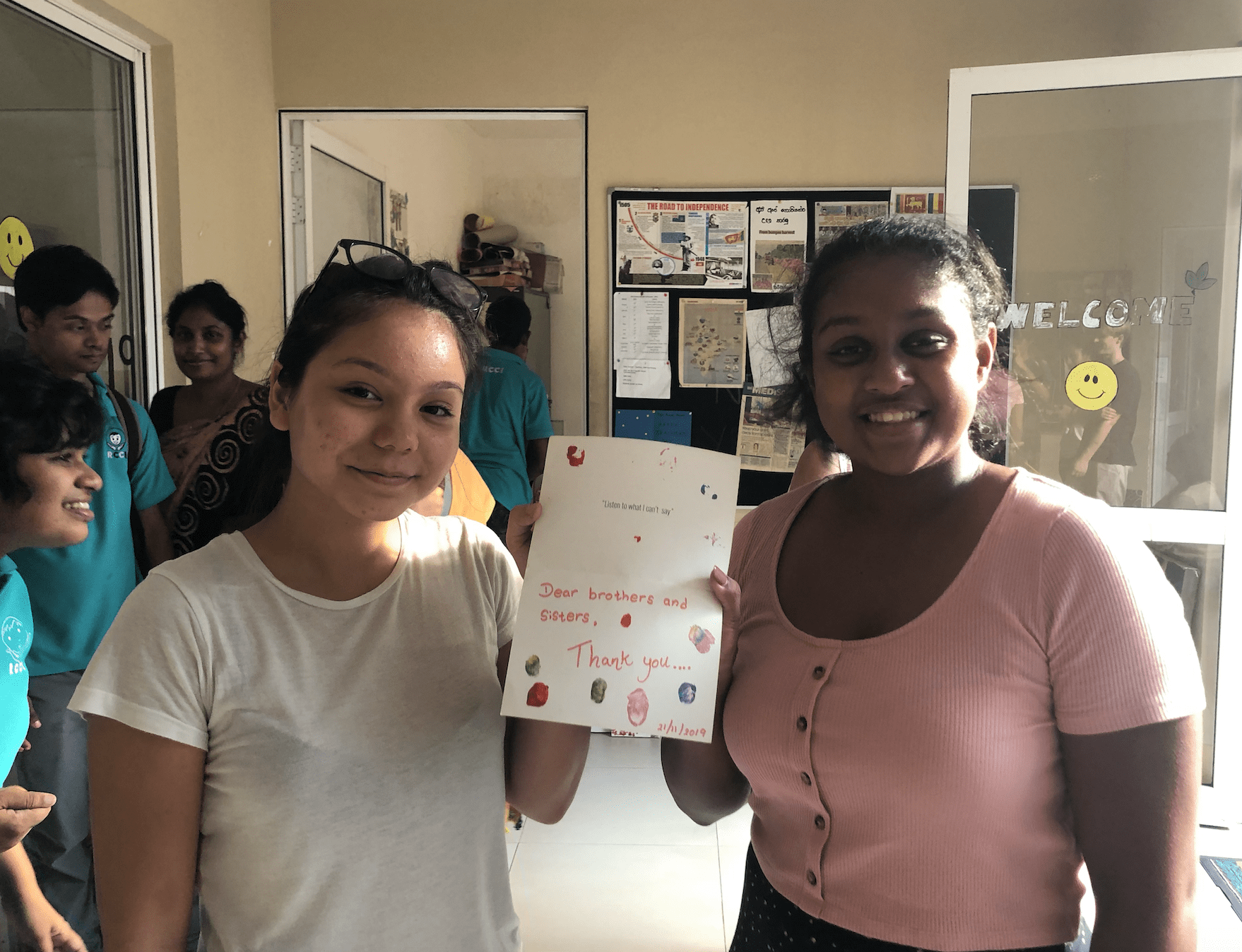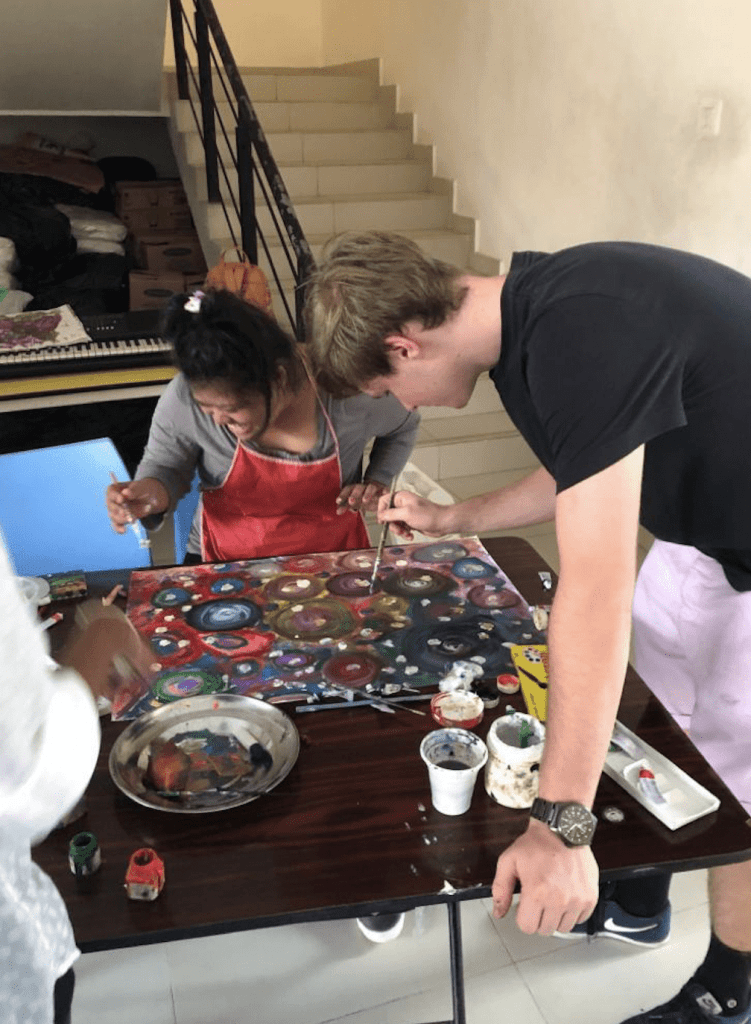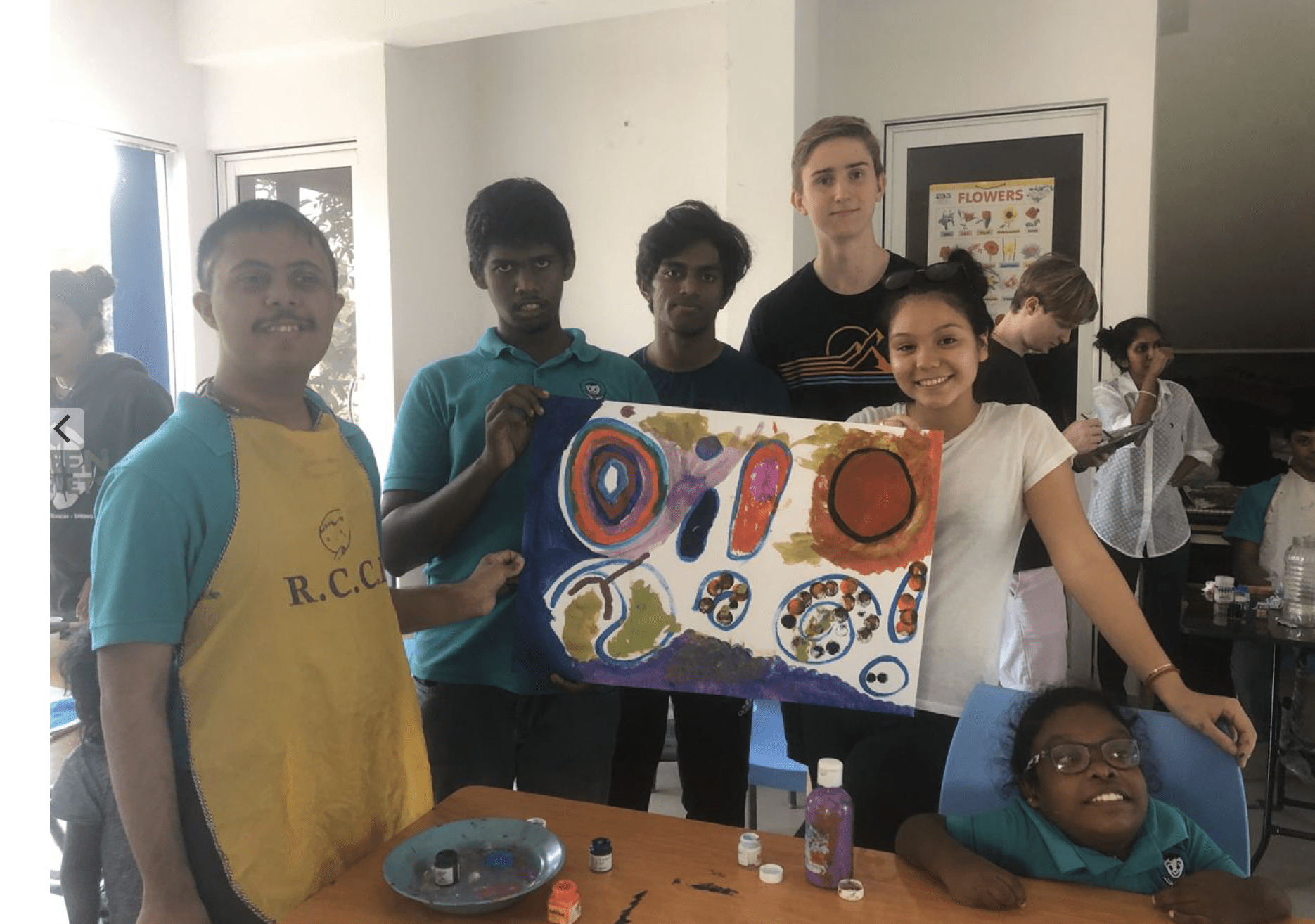
Art Exhibition
One of our focal points for the students in RCCI is to help nurture their social skills through empirical means, thereby allowing them to experience and understand the essence of what is taught. An excellent example of the students polishing the cognitive skills, and more specifically, collaborative skills was when my peers and I visited their center to help make art for their annual Art Exhibition. This trip was a crucial milestone not only because this was our first visit to the center this year but since these artworks could potentially be candidates for the t – shirt design.

Iris and Anargi accepting the Thank You Card (Photo Credits; Arav)
Complementing popular belief, art has often been used as an explorative tool to discover untapped skills, especially in special needs students and is often considered an useful method of deciphering a student’s interests. Therefore, my peers and I were not only excited to play a role in terms of exploring their artistic capabilities but teach them valuable collaboration and communication skills, while, simultaneously, being engaged in the process. The theme of this year’s art projected was ‘spherical shapes’ and my peers and I were asked to aid the students to create an artwork that centered on ‘circles’. Transferring some of the skills that I had learnt in my visual art classes, in the years prior, I hoped to assess the students’ mirroring and listening skills.

Louis and Samandhi Photo Credits; Anargi
For example, when Louis and I were placed in a group working sorely with watercolors, I began using the tip of my brush and, primarily, cool colors when painting circles on the poster paper. I made sure to enact every move I completed with exact precision, in order to make it easier for the students to follow, while ensuring that I stay within the ‘cool color spectrum’, so as to not confuse them. I watched closely as the students attempted to mimic my movement, their brows furrowed in concentration, the fingers steadily holding the brush, guiding it through in circular motions. I can remember, in exact detail, how their faces lit with satisfaction and glee when they moved their eyes to my circle and then back to theirs. After my nod of approval, the students repeated the process often forgetting the cool color palette and dipping their paint brush, somewhat hastily into the next the container of paint that they could find. The poster paper that I initially envisioned to look like a uniformed collection of cool-tempered circles soon disintegrated into a colorful mess; with some of the kids, frenzied with excitement accidently drawing over other student’s circles. It was refreshing to see the students explore their skills and artistic visions, free of any restrictions, as it was then that I could truly see the impact of our service in terms improving their collaboration and communication skills.

RCCI team with Rakesh (Photo Credits; Anargi)
Unlike any of the prior instances in which we allowed for the students to actively interact with each on creative projects, a number of issues were brought to light, the first being that students who were of a more introverted nature were not being acknowledged within the group. This issue was reflective of their flawed team working abilities, inclusive of collaboration and communication that were often lacking in this environment. However, after spending time encouraging group activities, where it is imperative to work together as group, it is clear that the positive results of the Art exhibition are evidence that our teaching is improving the students’ social dynamic,
The two learning outcomes that this experience encompassed was demonstrating that a challenge has been undertaken while developing new skills in the process and, demonstrating the skills when recognizing the benefits of working collaboratively. The first learning outcome is somewhat subtle as the challenge is more subliminal in terms of ‘polishing their communication and collaboration skills’, however it can also be seen that through this experience, separate values of patience and acceptance might have also been unintentionally, adopted. For example, while closely interacting with your peers it requires one to be not only open minded towards foreign ideas but also have patience when dealing with inputs that you do not normally agree with it. I feel as if the students embodied both virtues when actively working together thereby enhancing not only their collaborative but communicative abilities. Contrastingly, the second learning outcome was more obvious it centers on improving collaborative skills which was one of our focal points of this experience, as I expressed above.
I feel like this experience is something to be repeated in the future as it not only the helped to unveil the true (vibrant) essence of every student but was a perfect excuse to roll up our sleeves and be momentarily transported back to our days playing with color!